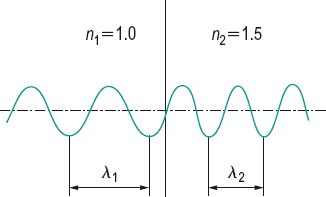W
wafer A very thin lens to be cemented on a larger lens to make a bifocal lens.
Wagner’s disease See syndrome, Wagner’s.
warpage, corneal See corneal warpage.
water content Water in a contact lens expressed as a percentage of the total mass of the lens in its hydrated state under equilibrium conditions with physiological saline solution containing 9 g/l sodium chloride at a temperature of 20 ± 0.5°C and with a stated pH value.

where M is the mass of hydrated lens, m is the mass of dry lens.
The US Food and Drug Administration (FDA) has categorized hydrogel contact lenses into four groups according to their water content and their surface reactivity (referred to as ionic if it contains more than 0.2% ionic material, and nonionic otherwise). Group 1: water content less than 50% and non-ionic. Group 2: water content greater than 50% and non-ionic. Group 3: water content less than 50% and ionic. Group 4: water content greater than 50% and ionic.
water-drinking test See test, provocative.
waterfall after-effect; illusion See after-effect, waterfall.
watery eye See epiphora.
wave, alpha See alpha waves.
wave number See wavelength.
wavefront A virtual surface emanating from an object or an optical system, perpendicular throughout to a bundle of rays.
See aberration, wavefront.

wavelength Distance in the direction of propagation of a periodic wave between two successive points at the same position in the wave (e.g. the distance between two crests). Symbol: λ. Note 1: The wavelength in a medium is equal to the wavelength in vacuum divided by the refractive index of the medium. Unless otherwise stated, values of wavelength are generally those in air. The refractive index of standard air (15°C, 101 325 N/m2) lies between 1.00027 and 1.00029 for visible radiations. Note 2: The reciprocal of the wavelength is called the wave number. Note 3: The wavelength is longer for red light than for blue light. Wavelength λ is equal to

where c is the velocity of light and v is the frequency of light. (Fig. W1)
See fluorescence; infrared; interferometer; light; phase; phenomenon, Bezold–Brücke; spectrum, electromagnetic; ultraviolet; theory
Stay updated, free articles. Join our Telegram channel

Full access? Get Clinical Tree


